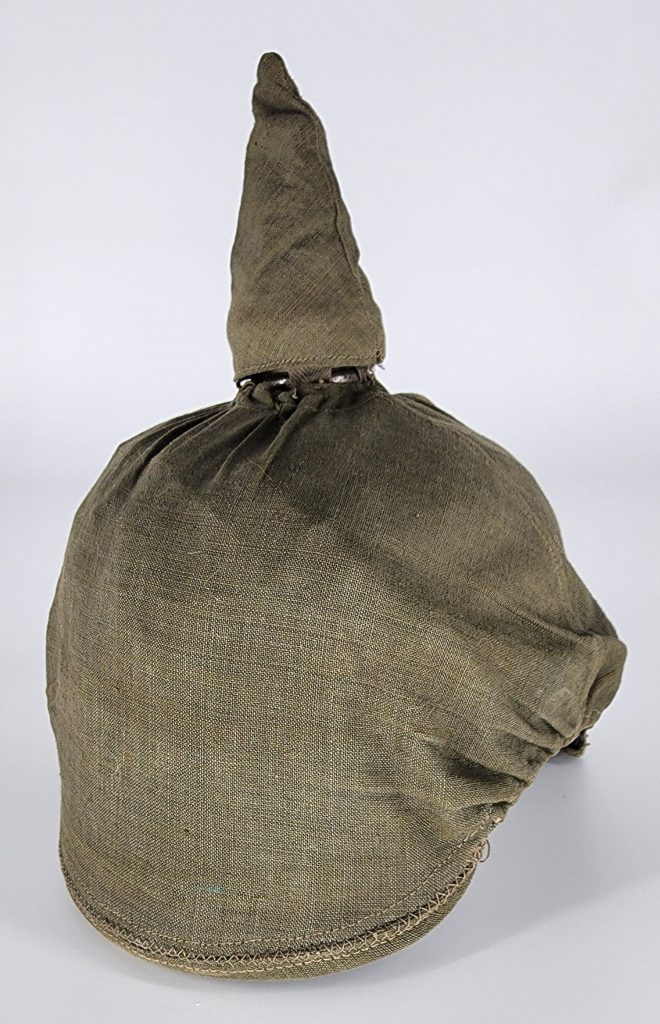One of the most iconic helmets is the WWI German Pickelhaube or Spiked Helmet. Frederick William IV introduced the Pickelhaube for use by the majority of Prussian infantry on 23 October 1842 by a royal cabinet order. The use of the Pickelhaube spread rapidly to other German principalities. The basic Pickelhaube was made of hardened (boiled) leather, given a glossy-black finish, and reinforced with metal trim (usually plated with gold or silver for officers) that included a metal spike at the crown. The version of the Pickelhaube worn by Prussian artillery units employed a ball-shaped finial rather than the pointed spike. Aside from the spike finial, perhaps the most recognizable feature of the Pickelhaube was the ornamental front plate, which denoted the regiment’s province or state. The most common plate design consisted of a large, spread-winged eagle, the emblem used by Prussia. Different plate designs were used by Bavaria, Württemberg, Baden, and the other German states. German military Pickelhauben also had two round, colored cockades behind the chinstraps attached to the sides of the helmet. The right cockade was the national cockade, and was colored red, black and white. The left cockade was used to denote the state of the soldier (Prussia: black and white; Bavaria: white and blue; etc.). All-metal versions of the Pickelhaube were worn mainly by cuirassiers. These helmets were sometimes referred to as lobster-tail helmets, due to their distinctive articulated neck guard.
In 1915 a new Pickelhaube / WWI German Spiked Helmet for other Ranks was introduced with a removable spike and a leather M91 chinstrap to replace the metal chin scales still being worn by some units such as cavalry and artillery.
To prevent officer’s from being easily spotted with their fixed spike tops and reflective chin scales, a new model of Pickelhaube specifically for officers was introduced in 1915 which also had a removable spike and “dulled” metal chin scales.
The Stahlhelms Museum has received an amazing donation of WWI German Headgear, insignia and medals from the estate of Hans Munnich. Hans collected WWI items with his father, Hermann Munnich, who served in the German Army during WWI. The Helmets from Hans’ collection are noted. Hermann’s WWI service medals and insignia can be seen in the Medals & Insignia section of the WWI German Museum.
Model 1915 Prussian Artillery Other Ranks Pickelhaube.
Hast he leather M-91 pattern chinstrap, vented rear spine.
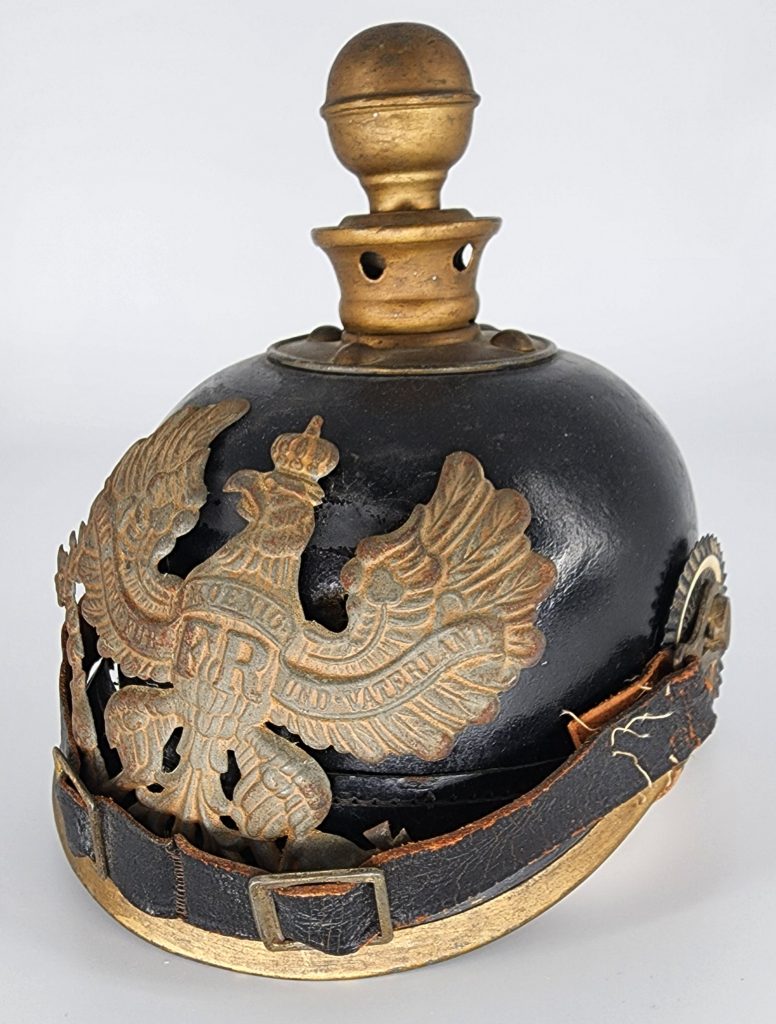
Bayern Reserve Infantry Officer Pickelhaube Spike Helmet.
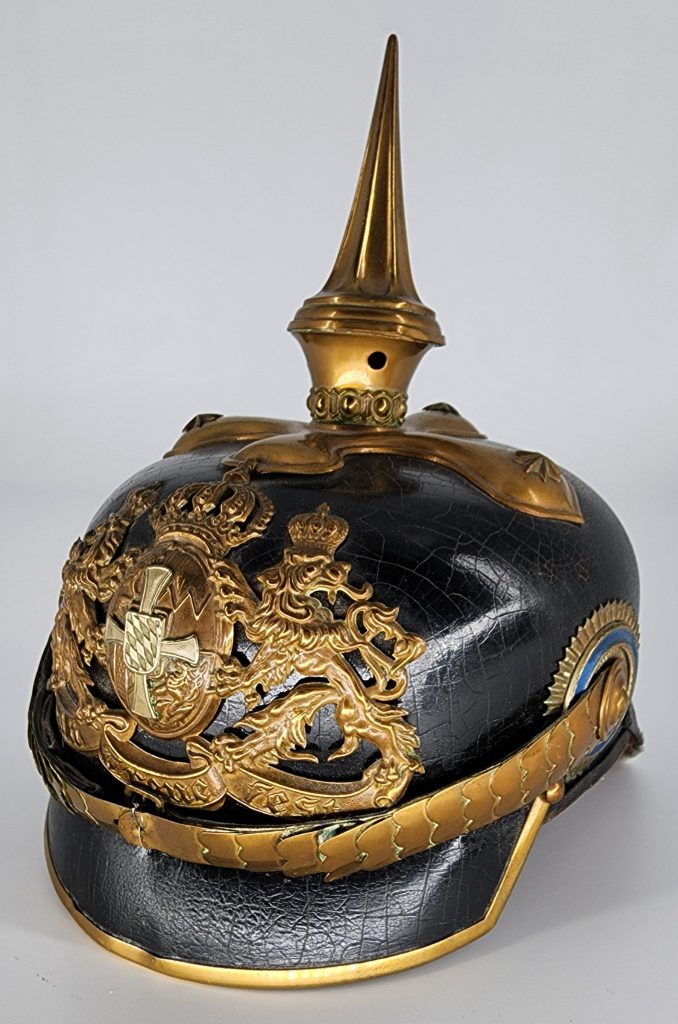
Prussian Other Ranks issued Metalhelm (Lobster Tail) Picklehaube.
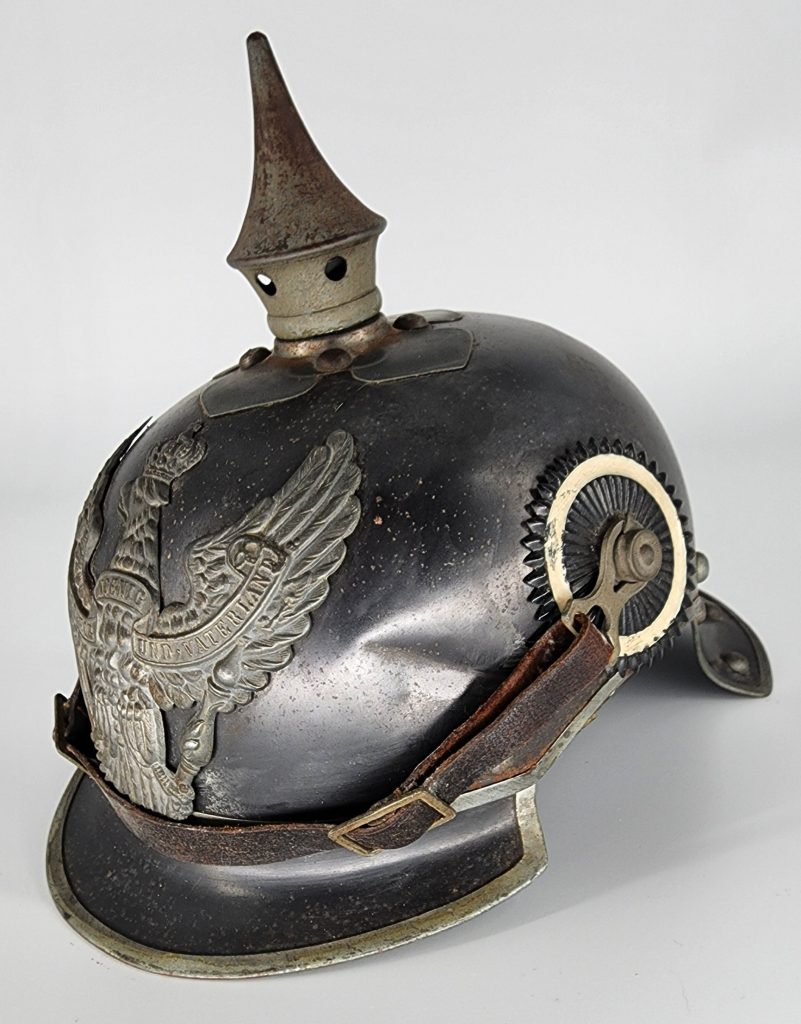
Model 1915 Prussian Other Ranks Tschapka for 1. Garde – Ulanen – Regt., Berlin Garde – Korps.
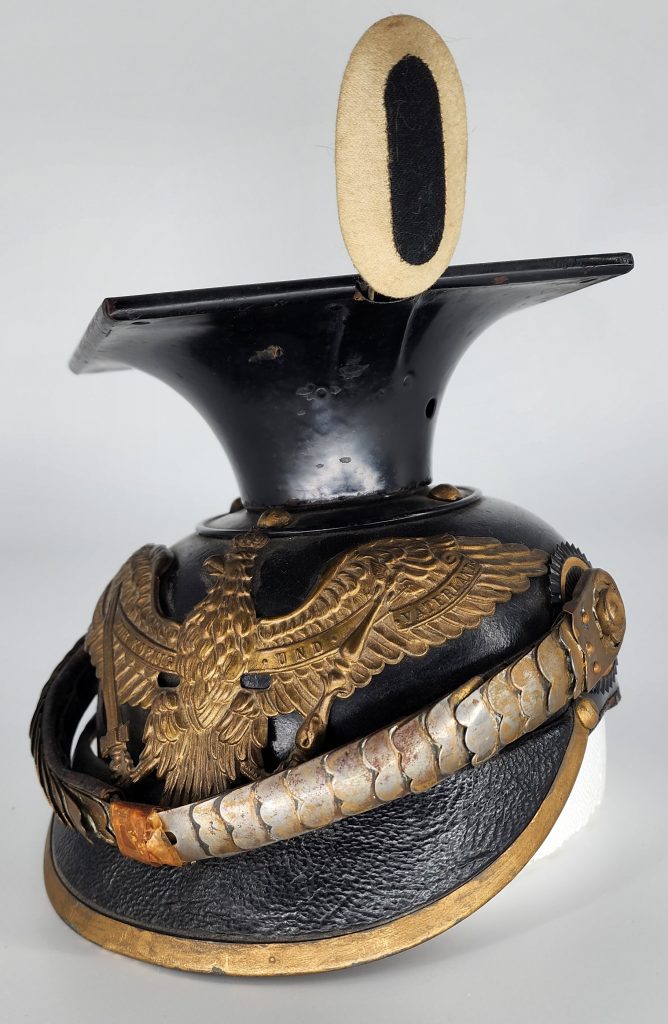
Ersatz Model 1915 Prussian felt Infantry Other Ranks Pickelhaube.
The helmet was manufactured as a Model 1915 with all Feldgrau steel fittings.
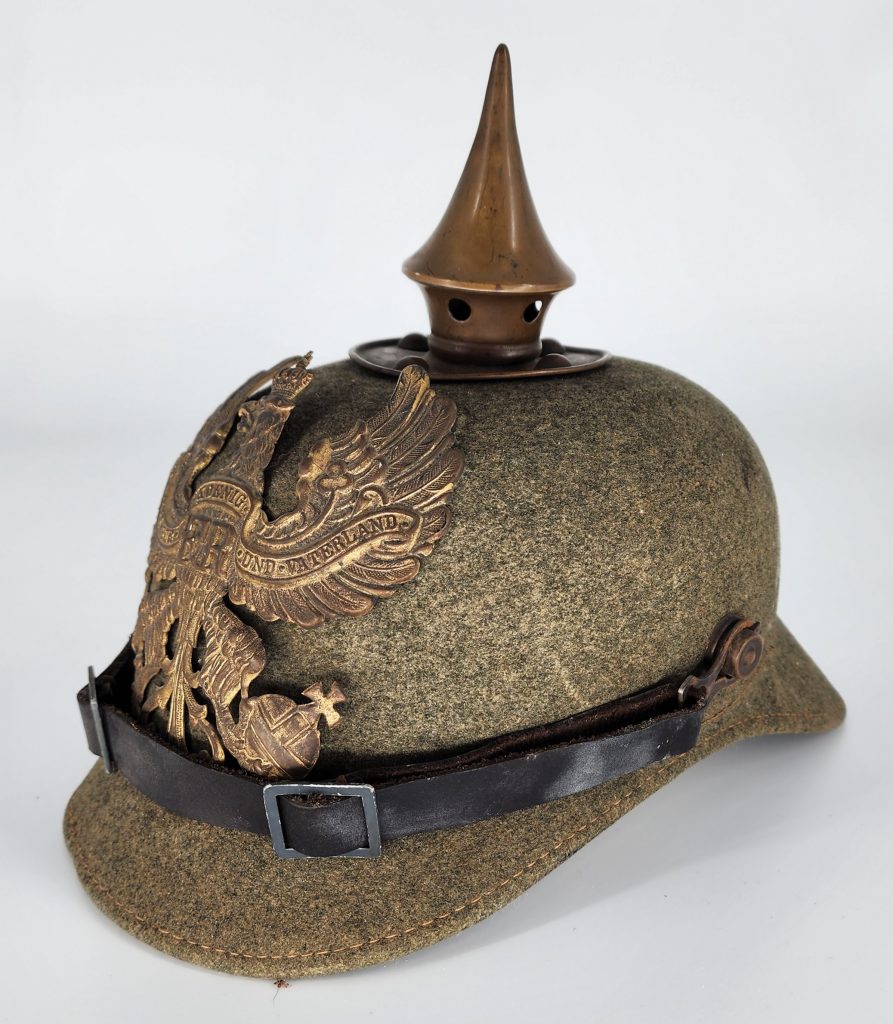
Austrian Model 1905 Officer’s Dragoon Helmet

WWI Prussian Field Pickelhaube Cover.
